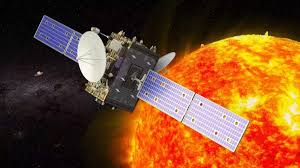
The Indian Space Research Organisation (ISRO) on June 2, announced that India’s inaugural solar mission has completed its halo orbit around the Sun-Earth L1 point on July 2. This significant breakthrough was achieved after a station keeper manoeuvre made its transition into the second halo orbit.
About Aditya-L1 Mission
The Aditya-L1 mission is an Indian solar observatory installed at the Lagrangian point L1 and was launched in September 2023. ISRO observed that the Aditya-L1 spacecraft completed circling the L1 point in the halo orbit in 178 days. The spacecraft was positioned into the intended halo orbit by ISRO on January 6, 2024.
What are the objectives of Aditya-L1?
The Aditya-L1 mission aims to study the Sun’s upper atmosphere, focusing on the chromosphere and corona. Its objectives include investigating heating mechanisms, ionised plasma physics, coronal mass ejections, and flares. It is sent to observe the particle and plasma environment, examine solar corona physics, diagnose plasma properties, and study the development of coronal mass ejections (CMEs). The mission also aims to identify processes leading to solar eruptions, measure magnetic fields in the corona, and investigate space weather drivers like the solar wind.
Aditya-L1 put into second orbit
The Indian space agency said that to maintain this orbit, the Aditya-L1 spacecraft underwent three station-keeping manoeuvres – on February 22, June 7, and July 2, ensuring its transition into the second halo orbit. These manoeuvres counteract perturbing forces that could push the spacecraft off course, it added.
Difficulties in keeping Aditya-L1 in orbit
Aditya-L1’s journey around the Sun-Earth L1 Lagrangian point requires careful planning and understanding of various forces that can push it off course. By studying these forces, ISRO could accurately plot the spacecraft’s path and plan necessary adjustments.





